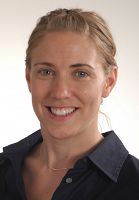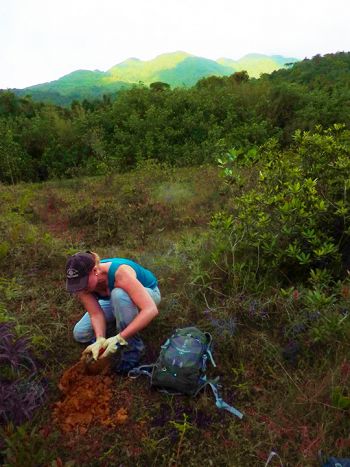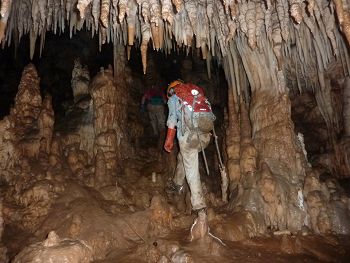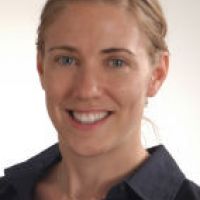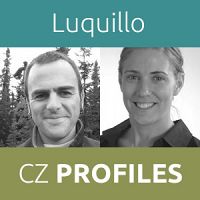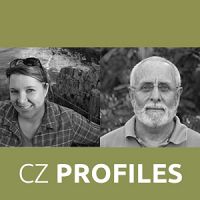Critical Zone Profile - JANE WILLENBRING (geomorphologist, Assistant Professor)
Jane Willenbring works to understand the dynamic interaction between life and landscape, or the “Science of Scenery,” as she likes to call it. She studies the linkages between the landscape, streams, atmosphere, and the plants and animals that make up the forest ecosystem in the Luquillo Critical Zone Observatory, in Puerto Rico. Willenbring uses a variety of methods from lab-scale to field-scale observations and geochemical analyses to understand how different processes are coupled and how the landscape is formed and evolves over time.
Willenbring is a member of the Geomorphology group at the Luquillo Critical Zone Observatory. Willenbring’s research group uses geochemical techniques, field observations, and GIS to understand how the landscape changes—with a focus on watershed-scale hot spots and hot moments. This work often involves counting isotopes, or variants, of chemical elements that accumulate in rocks when they're hit by cosmic rays from space.
“I am—and will always be—just a kid making rivers in the mud with a garden hose. Now, my experiments are just more technically demanding and I get to communicate what I learn with others!” —Jane Willenbring
I grew up in rural North Dakota without a TV for much of my childhood. A lot of children (and adults!) would probably find this oppressive and isolating, but I loved it. I explored the vast, rolling prairie and came up with experiments to do. I didn’t know a lot about science then and so I would use my imagination to make up stories about the landscape and the things that lived on it. This sense of wonder and curiosity about the world still makes me want to better understand the Earth and this is still how I ‘play.’
The late Fred Scatena was a great supporter of young people/faculty and when I arrived at the University of Pennsylvania as an assistant professor in 2010, he wanted me to get involved with the Luquillo CZO. I was happy to do so.
At Luquillo we are trying to understand basic science questions, but like all basic science endeavors, the results and the methods produced end up having relevance to other fields and society. For example, we are studying how soil is produced from below ground from the chemical breakdown of rock and from above through inputs at the Earth’s surface from plant litter and dust. We also need to know how fast the soil is removed and what kinds of events or environmental controls impact the removal of material. The work and the methods we develop have implications for understanding fine-sediment erosion and deposition. Fine-grained sediment is a major stream pollutant all over the U.S., and in Puerto Rico, fine-sediment negatively impacts reef ecosystems. We also study the impact of worms on how fast rain can flush through a landscape. Wormholes and roots end up being very important for understanding landslide phenomena, which affect infrastructure and human and animal habitat.
Jane Willenbring taking soil samples to determine nutrient content and residence time of sand particles. Photo credit: Gilles Brocard
I always think of a John Muir quotation when I think of the importance of the CZO network: “When we try to pick out anything by itself, we find it hitched to everything else in the Universe.” When scientists think about nutrients or water or even the biota in a landscape, it is impossible to think of a template with these things superimposed on it like an immobile photo backdrop. Instead, everything interacts with everything else. We actually can’t figure out how the landscape looks without thinking about the trees—and the tree biomass and species distribution is probably controlled by the landscape. It is yet another chicken-and-egg issue.
In 2008, a group of National Center for Earth-surface Dynamics (NCED) postdocs and I co-organized an international conference titled, “Dynamic Interactions of Life and its Landscape,” to bring together a group of young scientists with the intent to draw attention to how life and landscape are elaborately coupled and cannot be understood in isolation. Many of us expressed the feeling after the meeting that we really wanted to start thinking more about life (if one studied the landscape) or landscape (if one studied life), but we agreed that we didn’t exactly know how to start even if we all embraced the general idea. We go to different conferences and we are often in different departments. Now I know whom to talk to, and I have incentive and opportunity to read and hear about the research being done by other groups.
CRITICAL ZONE OBSERVERATORIES (CZO)
The ‘Life and its Landscape’ conference and my time as a postdoc at the National Center for Earth-surface Dynamics made me understand the importance of viewing landscapes as dynamic systems, but I would never have branched into such unknown territory without the help of the CZO network. I didn’t know it as a postdoc, but at the same time we were creating our small conference, a group of senior and mid-career scientists and NSF program managers were hard at work trying to fund the Critical Zone Observatory network. This created a unique and funded forum where scientists can talk to other scientists—preferably in field locations—about what they have observed. Though we don’t like to talk about dollars, funding is key to being able to do good research, and I’m thankful for newly funded efforts to better integrate the national and international CZ networks.
There are a number of structural barriers to interdisciplinary science that the CZO network has helped to break down, but the biggest challenge is still lack of time. Every question results in even more questions. One of the great aspects of working in the CZO network is that much of the foundational data needed to bridge some of the gaps has already been collected. The Luquillo CZO is especially data-rich because of ongoing work by the Forest Service, the Geological Survey, and the Long-term Ecological Research program, which have all worked in this area of Puerto Rico. The CZO network is now starting to answer some big questions and exploring new frontiers in the Earth Sciences by standing on the shoulders of these giants—the large existing USFS, USGS, and LTER datasets.
Critical zones can be a place of great collaborative power for everyone, even if scientists are not directly funded by them. I am currently working on a project which is not funded through the CZO program that compares two CZOs. I think the added value of the CZO makes getting people interested in the site and the work easier. There is a wealth of data available to everyone—not just to CZO investigators.
Willenbring’s Luquillo CZO team in a cave (Cueva Ensueno) taking samples of quartz sand shielded from cosmic rays to determine when uplift of the island occurred. Photo credit: Thomas Miller
One of the aspects that I find the most impressive about the CZOs is that they focus on understanding the long-term changes a landscape goes through. It is often tempting to avoid understanding the past state when there is so much at stake now or at least over human timescales. But without understanding how a natural landscape behaves, we can’t understand what baseline fluxes or what the pre-anthropogenic state would be like.
My research group is quite active in broader impact initiatives. In addition to the usual ways scientists communicate through published peer-reviewed work, presentation at conferences and invited seminars, and through email and hosting outside visitors, we also try to engage with the public by making demonstration videos and creating exhibits to inform visitors to the El Yunque National Forest—the site of the Luquillo Critical Zone Observatory. In West Philadelphia, we provide opportunities to learn about science for those in severely underprivileged communities. My research group organized a program called “From Microbes to Mountains” to highlight how interconnected the natural world is for a group called Rising Stars.
Jane Willenbring, Assistant Professor of Earth and Environmental Science
Jane Willenbring taking soil samples to determine nutrient content and residence time of sand particles. Photo credit: Gilles Brocard
Willenbring’s Luquillo CZO team in a cave (Cueva Ensueno) taking samples of quartz sand shielded from cosmic rays to determine when uplift of the island occurred. Photo credit: Thomas Miller
Related News
Explore Further
